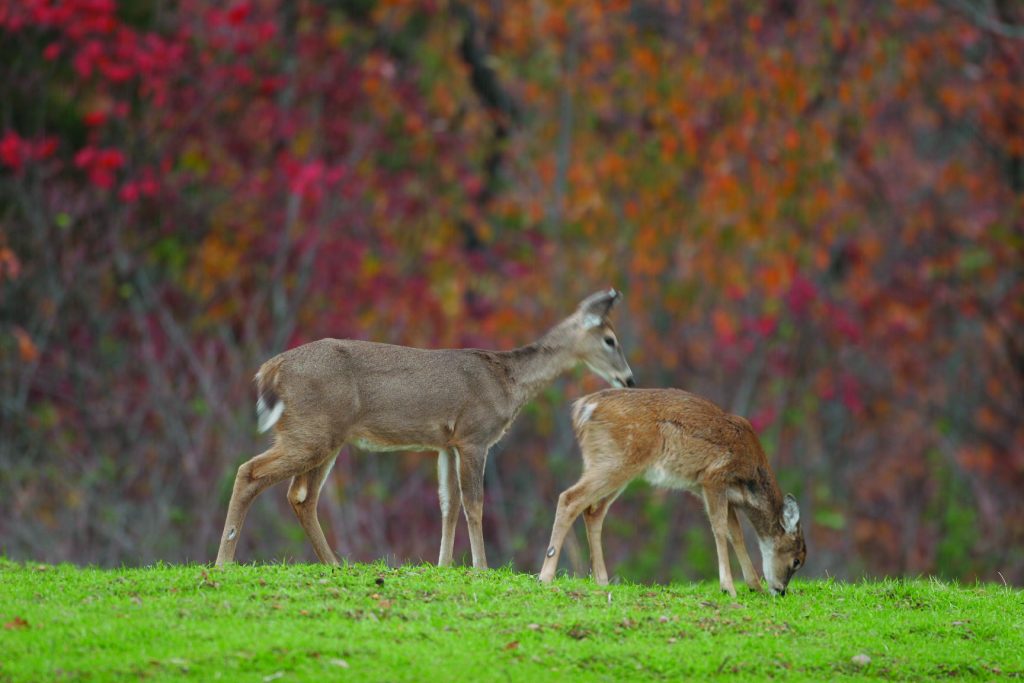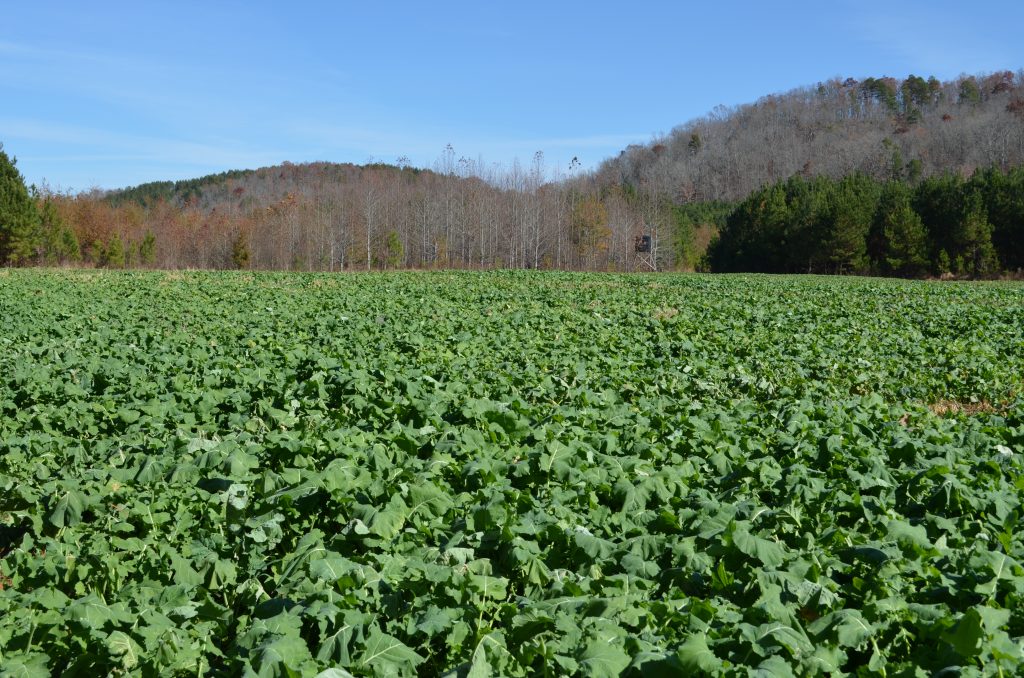Seedbed preparation in October is the difference between success and failure of your food plots.
Archery season is here and most hunters in Alabama are in deer killing mode. If you are running behind on seedbed preparation and getting your food plots planted for the fall, there is still time to get some last-minute food for your wildlife planted.
“Plantings in the brassica family, including rapes, turnips, and radishes are great for mid- to late-season attraction.”
Cool season plantings such as oats, triticale, winter peas, and annual clovers can come up fast with proper moisture and provide great early-season attraction. Plantings in the brassica family, including rapes, turnips, and radishes are great for mid- to the late-season attraction.
Blends that include multiple cultivars can be very effective for an all-season plot. Outfitters Blend and Last Bite are popular plantings for the southern states.
Food Plot Prep
Seedbed preparation is extremely important in growing successful food plots. Many planting failures can be attributed to poor seedling survival or lack of germination due to incorrect planting depth and poor seedbed prep.
This is especially critical when planting small seeds like clover, chicory, brassicas, or alfalfa. These seeds need a covering of no more than ¼ inch of soil. Oftentimes when plots are disced or tilled, the seedbed is left fluffy, which is not conducive for small seeds to germinate. When small seeds are broadcast onto a very finely-disked, fluffy seedbed, even a moderately heavy rain causes some seeds to be buried too deeply. This may result in an uneven stand.
Ideally, when planting smaller seeds, fields should be cultipacked after discing or tilling to firm the seedbed up. Seed can then be broadcast. For the best seed-to-soil contact, fields can then be cultipacked again. This process creates a great environment for seedling survival by incorporating the seed at the proper depth.
Cultipacking also allows moisture to move through the soil profile properly. It keeps moisture around the seed as it germinates. Leaving a seedbed unpacked and full of airspace allows the soil to dry out much more rapidly, which increases the chance of plot failure.

Fertilization
A question I am often asked for seedbed preparation is “What kind of fertilizer do I need to use on my plots?” That is a loaded question and one with a lot of variables.
There is no substitute for an up-to-date soil test that gives pH and nutrient levels. Adding agricultural lime to neutralize the acidity of the soil is an often-overlooked step but one that is a major factor in growing good crops.
For example, a soil with a pH level of 5.0 is 100 times more acidic than one at 6.0. At a level of 5.0, 60% to 70% of the fertilizer added is unusable by the plants. Not only will food plot crops grow better in a less acidic soil, deer will also utilize the crops better due to a better tasting plant.
For most all food plot crops—both warm and cool season—a pH of 6.2 to 7.0 is ideal. Many hunting clubs and individuals work on a pretty tight budget when it comes to planting food plots. When soil tests reveal a low pH level, money is much better spent on getting the appropriate amount of lime added to the soil rather than more fertilizer.
“When soil tests reveal a low pH level, money is much better spent on getting the appropriate amount of lime added to the soil rather than more fertilizer.”
Herd Management
Most of us hunt in areas where the deer density is fairly high and there is no shortage of does to harvest on any given hunt. More people are getting on board with the QDM philosophy and trying to do their part in managing herd numbers.
Keeping the population down to a manageable density and balancing the buck-to-doe ratio is key in creating a more intense rut and increased competition for does. Keeping deer numbers down to manageable levels is also beneficial to your native browse and food plots.
A decreased number of mouths feeding on a property ensures the deer that do live there receive a higher percentage of the more desirable and higher nutritional plants and crops that are planted for them.

Be certain of your target when doing your trigger finger management this season. Many button bucks and yearling spikes are killed every year by being mistaken for does. Although mistakes are going to happen, take the time to use your binoculars and scope to really check the deer carefully before taking the shot.
Every immature buck killed by mistaken identity is a step backward in managing a herd for its highest potential.



